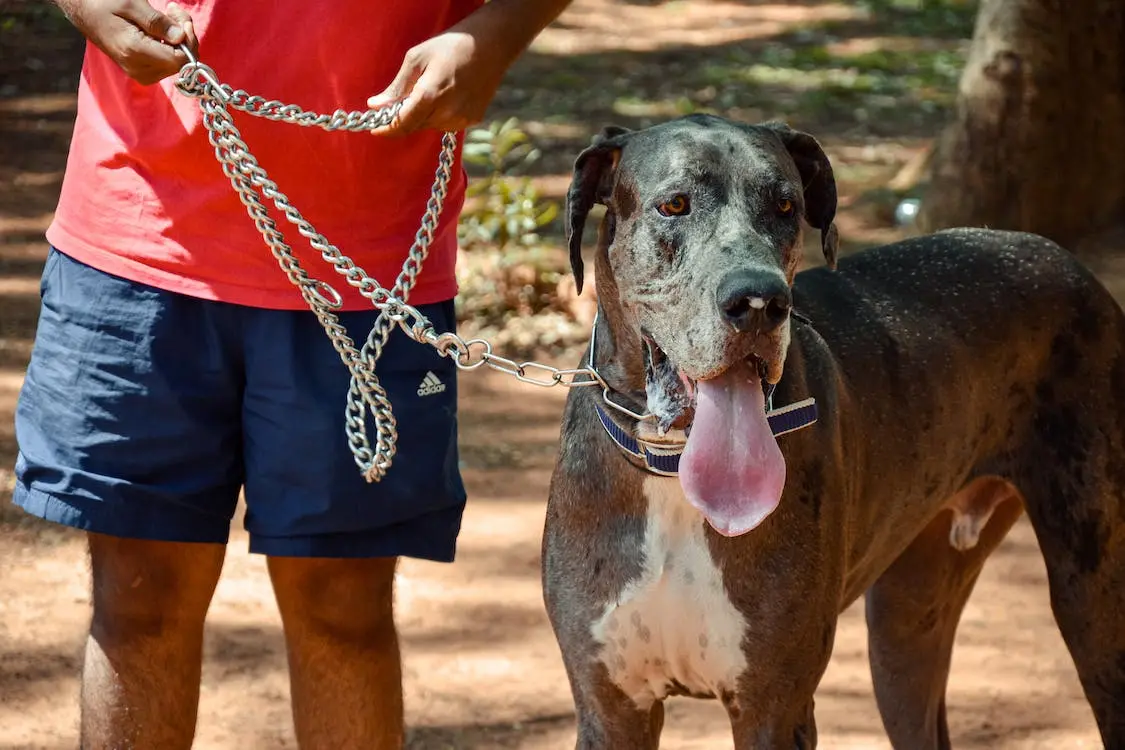Great Danes, one of the world’s largest dog breeds, are a type of working dog recognized for their enormous stature, large heads and muzzles, long limbs, narrow bodies, and short fur. These canines are adored for their upbeat attitudes and companionable demeanors.
Great Danes are considered huge dogs because they tower over medium breeds. They have a regal, intelligent, and devoted nature, and they bond well with their owners, making them excellent family dogs.
In most homes, a well-trained Great Dane will thrive. To fit the dog’s commanding size, your home does not need to be exceptionally vast, but you will need some extra space (especially because to its long tail).
Unfortunately, like other big breeds, these dogs have a shorter lifespan than ordinary canines. However, Great Dane enthusiasts will tell you that spending any length of time with one of these gentle giants is rewarding.
Characteristics of the Great Dane
The disposition of the Great Dane is true to its “gentle giant” moniker. When properly trained, these dogs are peaceful and laid-back both at home and in public, and their caring temperament makes them affectionate family members.
They are patient and get along well with youngsters, but because they are such a massive breed, they can accidently knock tiny children over simply by bumping into them.
- World’s Most Obedient Dog Breeds
- World’s Least Obedient Dog Breeds
- Top 10 High-Jumping Hounds
- Meet the Fastest Dog Breeds in the World
- The 5 Different Types of Pit Bull Dog Breeds
They are also not appropriate for young children to manage on a leash. Great Danes are an excellent choice for multi-pet households because they are usually amicable with other animals (particularly when raised together).
History of the Great Dane

Although some claim the breed has ancient origins, Great Danes originated in Germany. They are most likely descendants of the English Mastiff and the Irish Wolfhound.
Despite the name “Dane,” the breed was established in Germany as a boar hunter. The powerful boar necessitated the use of an equally powerful dog to restrain the prey until the hunter arrived.
Over time, the breed lost its reputation as a hunting dog and became more well-known as a companion and watchdog.
German breeders attempted to make them less aggressive, which resulted in the calm temperament found in the majority of Great Danes today.
- World’s Most Obedient Dog Breeds
- World’s Least Obedient Dog Breeds
- Top 10 High-Jumping Hounds
- Meet the Fastest Dog Breeds in the World
- The 5 Different Types of Pit Bull Dog Breeds
Great Danes first debuted in the United States in the late 1800s and rapidly gained popularity. The American Kennel Club (AKC) first recognized the breed in 1887.
Great Danes are the world’s tallest dog, according to Guinness World Records. Zeus, who is 44 inches tall at the shoulder, is a recent record holder.
Both the cartoon Scooby-Doo and the comic-strip character Marmaduke are Great Danes. The breed has also played the title role in film adaptations of Sir Arthur Conan Doyle’s The Hound of the Baskervilles.
Great Dane Care

Caring for your Great Dane is similar to caring for other short-haired breeds of lower sizes, but their huge stature necessitates a few extra precautions when it comes to exercise.
It is also critical to train this breed in basic obedience from a young age in order to develop a well-rounded dog that behaves well at maturity.
Exercise
When they are young, Great Danes are playful and energetic. Allowing them to jump and taking them along for activities like jogging until they are at least 18 months old can help maintain their growing bones and joints healthy.
Most of these canines have moderate activity levels as they age. Daily walks, for example, can help keep your dog fit and healthy.
Most Great Danes can play securely in a fenced yard because they are not prone to fence leaping.
Grooming
Great Danes have short, dense coats that require very basic care and weekly brushing. They shed most thickly in the spring and fall. Bathing is required on a regular basis for Great Danes, usually once or twice a month.
Ear inspections and cleanings should be performed on Danes with natural (floppy) ears on a regular basis. While some people prefer to have their ears surgically cropped, this practice is becoming less prevalent and is even prohibited in some countries.
To keep your dog’s nails healthy and prevent splitting or tearing, cut them every couple of weeks. Brush your dog’s teeth at least a couple times per week to maintain healthy oral hygiene. This will aid in the prevention of gum disease.
Training
The Great Dane requires extensive obedience training as well as socialization with other dogs. If not properly trained, this breed’s enormous size makes it extremely difficult to manage.
These dogs are unaware of their large size, thus jumping, leaning, and leash pulling should be avoided at all costs.
Great Danes are easy to housetrain and prefer to spend time home with their owners rather than outside alone. Crate training with a crate designed specifically for big breeds is advised.

